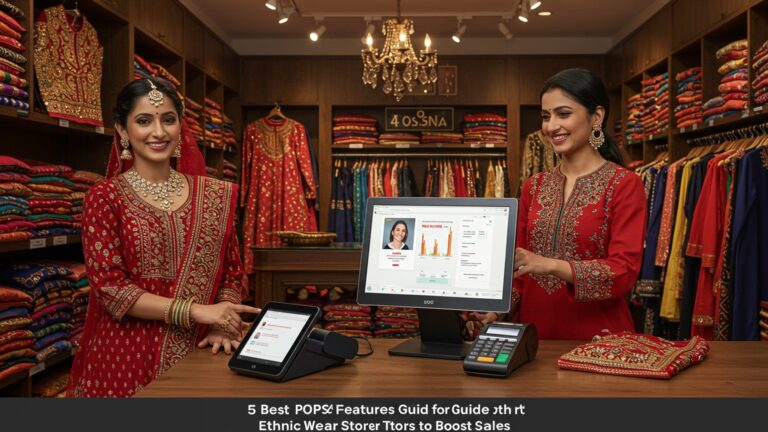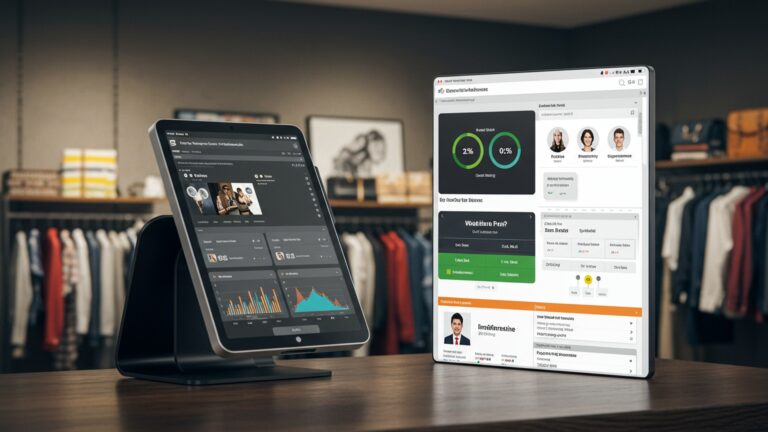Learn 7 Best Practices for Efficient Clothing Inventory Management
The dynamic landscape of fashion retail, marked by rapid trend cycles and the surge in e-commerce, amplifies the critical need for an optimized clothing inventory management system. Businesses frequently grapple with the costly pitfalls of excess deadstock or, conversely, lost sales due to stockouts, directly impacting profit margins and brand reputation in a competitive market. Modern consumers, increasingly valuing sustainability and efficient fulfillment, demand precision that traditional methods often fail to deliver. Leveraging advanced inventory strategies, therefore, becomes indispensable for maintaining operational agility, improving cash flow. achieving sustainable growth in today’s volatile retail environment, moving beyond reactive stock-taking to proactive strategic planning.

Understanding the Core: What is Clothing Inventory Management?
In the dynamic world of fashion and retail, effective inventory management is not just a best practice; it’s the backbone of profitability and customer satisfaction. At its heart, clothing inventory management refers to the systematic process of ordering, storing, tracking. controlling the stock of clothing items from the point of manufacture to the point of sale. This encompasses everything from raw materials (if you’re a designer/manufacturer) to finished goods ready for customers.
For any business, big or small, dealing in apparel, the stakes are high. Mismanagement can lead to a host of problems: lost sales due to out-of-stock items, capital tied up in excess inventory, increased storage costs. even the unfortunate reality of dead stock that never sells. Conversely, a well-oiled clothing inventory management system ensures you have the right products, in the right quantities, at the right time. in the right place. This optimization directly impacts your cash flow, operational efficiency. ultimately, your bottom line. It’s about finding that sweet spot where demand meets supply without unnecessary waste or missed opportunities.
Best Practice 1: Implement a Robust Clothing Inventory Management System
The days of relying solely on spreadsheets and manual counts are rapidly becoming a relic of the past for efficient operations. Implementing a dedicated clothing inventory management system is perhaps the most fundamental step towards efficiency. Such a system is a software solution designed to automate and streamline various inventory-related tasks, often integrated with hardware like barcode scanners or RFID readers.
These systems offer a centralized database for all your stock, providing real-time visibility into quantities, locations. movement. Benefits include significantly improved accuracy, reduced human error, accelerated order fulfillment. data-driven insights that empower better purchasing decisions. For instance, a small online boutique once struggled with overselling popular items because their manual inventory updates weren’t fast enough. After adopting an integrated clothing inventory management system, their overselling incidents dropped by 90%, leading to higher customer satisfaction and fewer refund hassles.
To illustrate the stark difference, consider this comparison:
| Feature | Manual Inventory Management | Automated Clothing Inventory Management System |
|---|---|---|
| Accuracy | Prone to human error, frequent discrepancies | High accuracy, real-time updates, minimizes errors |
| Time & Labor | Very time-consuming, requires significant manual effort | Automated processes, frees up staff for strategic tasks |
| Visibility | Limited, often outdated stock counts | Real-time view of all inventory across locations |
| Reporting | Basic, difficult to generate detailed reports | Comprehensive analytics, sales trends, forecasting data |
| Scalability | Challenging to scale with business growth | Easily scales to accommodate larger inventory volumes and multiple channels |
| Cost | Low initial cost, high potential for hidden costs (errors, lost sales) | Initial investment in software/hardware, significant long-term savings and ROI |
Choosing the right system involves assessing your business size, budget, specific needs (e. g. , multi-channel sales, international shipping). integration capabilities with existing POS or e-commerce platforms.
Best Practice 2: Conduct Regular and Accurate Inventory Audits
Even with the most sophisticated clothing inventory management system, regular physical audits remain critical. Audits serve as a crucial check-and-balance, ensuring that your digital records accurately reflect your physical stock. Discrepancies can arise from various factors, including receiving errors, misplaced items, damage, or even theft (shrinkage).
There are several types of audits:
- Periodic Inventory: Typically conducted once or twice a year, involving a complete shutdown of operations to count every item. While thorough, it’s disruptive and labor-intensive.
- Perpetual Inventory: This is where a robust clothing inventory management system truly shines. It tracks inventory continuously, updating records as items are sold, received, or moved. But, even perpetual systems benefit from physical checks.
- Cycle Counting: The most practical approach for many clothing retailers. Instead of shutting down, small sections of inventory are counted on a rotating basis throughout the year. This minimizes disruption while maintaining high accuracy. For example, you might count all “men’s shirts” on Tuesday, “women’s dresses” on Wednesday. so on.
The goal is to identify and investigate any variances between your system’s data and the actual count. For instance, a retail chain found a consistent discrepancy in their denim section. Through targeted cycle counts and investigation, they discovered a recurring receiving error where one style of jeans was consistently mislabeled as another, leading to stockouts of the popular style and overstock of the less popular one. Adopting cycle counting, combined with barcode scanning technology, helped them pinpoint and rectify this issue, saving thousands in potential lost sales and unnecessary markdowns.
Actionable takeaway: Integrate cycle counting into your weekly or monthly operational schedule. Use handheld scanners to speed up the counting process and directly update your clothing inventory management system, significantly reducing manual data entry errors.
Best Practice 3: Optimize Stock Levels with Data-Driven Forecasting
One of the biggest challenges in clothing retail is predicting demand. Fashion trends are fickle. seasonality plays a huge role. This is where data-driven forecasting becomes invaluable. Effective forecasting helps you avoid both overstocking (tying up capital in slow-moving or dead stock) and understocking (missing out on sales opportunities).
Key metrics and data points for robust forecasting include:
- Historical Sales Data: review past sales trends for specific products, categories. time periods.
- Seasonal Trends: comprehend how demand fluctuates with seasons, holidays. fashion cycles.
- Promotional Impact: Factor in the effect of past and planned marketing campaigns and discounts.
- Economic Indicators: General economic health can influence consumer spending on apparel.
- Fashion Trends: Stay abreast of emerging styles and popularity shifts, often informed by market research or fashion analytics tools.
A sophisticated clothing inventory management system often includes forecasting modules that use algorithms to process this data, providing predictive insights. For example, a major sportswear brand uses its system to review sales of specific shoe models over the past five years, factoring in regional weather patterns and major sporting events. This allows them to pre-order appropriate stock levels for new releases, minimizing both surplus and shortages. Without such a system, predicting the nuanced demand for hundreds of SKUs across different regions would be a monumental, error-prone task.
By leveraging these insights, businesses can make informed purchasing decisions, optimize order quantities. strategically plan for markdowns or promotions for slow-moving items before they become dead stock. This proactive approach ensures capital is deployed efficiently and shelves are stocked with what customers want to buy.
Best Practice 4: Streamline Receiving and Put-Away Processes
The moment new inventory arrives at your warehouse or store, it presents a critical juncture for inventory accuracy. Inefficient receiving and put-away procedures are common sources of errors that ripple throughout the entire inventory management process. A streamlined process ensures that items are accurately counted, inspected. moved to their designated storage locations quickly, making them available for sale or fulfillment without delay.
Best practices for receiving include:
- Standardized Procedures: Every delivery should follow a consistent process, from checking the packing slip against the purchase order to physically counting the items.
- Immediate Processing: Avoid letting boxes pile up. Process new arrivals as quickly as possible to prevent bottlenecks and ensure the items are reflected in your available stock.
- Quality Control: Implement a quick check for damages or discrepancies during receiving. Address issues with suppliers immediately.
- Proper Labeling: Ensure every item receives its unique SKU (Stock Keeping Unit) label or barcode upon arrival, if not already present. This is essential for tracking within your clothing inventory management system.
- Designated Put-Away Locations: Have clear, pre-defined locations for all inventory, making it easy to put away new stock and retrieve it later.
Consider the case of “Thread & Needle,” a mid-sized apparel retailer. They used to experience frequent delays in getting new collections onto the sales floor, sometimes taking days after delivery. This was due to an ad-hoc receiving process and a lack of clear storage rules. By implementing a system where each incoming box was immediately scanned into their clothing inventory management system, cross-referenced with the purchase order. then directed to a specific pre-assigned shelf location, they reduced their receiving-to-shelf time by 70%. This meant new styles hit the floor faster, maximizing their selling window and improving customer experience.
Best Practice 5: Master the Art of Inventory Categorization and Location
Chaos is the enemy of efficient inventory management. Without a logical system for categorizing and storing your clothing items, even the most advanced clothing inventory management system will struggle to deliver its full potential. Effective categorization allows for granular tracking and reporting, while precise location management ensures items can be found and picked quickly.
Categorization: Assign unique SKUs to each product variant (e. g. , “Men’s T-Shirt, V-Neck, Blue, Size M”). Beyond the basic SKU, categorize items by:
- Product Type: Dresses, Jeans, Shirts, Accessories.
- Gender/Age Group: Men’s, Women’s, Kids’.
- Brand: If you carry multiple brands.
- Season/Collection: Spring/Summer 2024, Holiday Collection.
- Fabric/Material: Cotton, Silk, Polyester.
This granular data allows for sophisticated analysis within your clothing inventory management system, helping you grasp which categories perform best, identify trends. make informed purchasing decisions.
Location Management: Just as crucial as what you have is knowing exactly where it is. Implement a clear, logical storage system:
- Zoning: Divide your warehouse or backroom into logical zones (e. g. , “Activewear Zone,” “Seasonal Storage”).
- Bin/Shelf Locations: Assign unique alphanumeric codes to shelves, racks. bins (e. g. , “RACK-A-SHELF-3-BIN-12”).
- Optimized Layout: Store fast-moving items in easily accessible locations. Group similar items together.
Your clothing inventory management system should be able to track the precise location of every SKU. When an order comes in for a “Women’s Silk Blouse, Red, Size S,” your system should instantly tell you it’s in “Zone B, Rack 7, Shelf 2.” This significantly reduces picking time and errors. A clothing e-commerce fulfillment center, for example, once spent an average of 5 minutes per item searching for stock. After implementing a strict alphanumeric bin location system and updating their clothing inventory management system to reflect these locations, picking time dropped to under 30 seconds per item, dramatically increasing their order fulfillment capacity.
Best Practice 6: Leverage Technology for Real-Time Tracking
Real-time inventory tracking is the holy grail of efficient inventory management. It means having an up-to-the-minute, accurate view of your stock levels across all locations – in the warehouse, on the sales floor, in transit. even items reserved for online orders. This level of visibility is almost impossible without leveraging modern technology, particularly integrated scanning solutions.
Key technologies for real-time tracking include:
- Barcodes: The most common and cost-effective method. Every product (or SKU variant) receives a unique barcode. Scanners at various points (receiving, sales, returns) update the clothing inventory management system instantly.
- RFID (Radio-Frequency Identification): A more advanced technology where tags embedded in or attached to clothing items emit radio signals. RFID readers can scan multiple items simultaneously without line-of-sight, making inventory counts incredibly fast and accurate. This is particularly useful for large volume retailers or warehouses.
- Integrated POS Systems: Your Point-of-Sale system should be directly integrated with your clothing inventory management system. Every sale should automatically deduct the item from inventory. every return should add it back.
The benefits of real-time tracking are profound: immediate knowledge of stock levels prevents overselling online, reduces stockouts, improves order fulfillment speed. minimizes shrinkage by quickly identifying missing items. For a fashion retailer operating both brick-and-mortar stores and an e-commerce platform, real-time tracking is non-negotiable. If a customer buys a dress online, the system needs to instantly reserve that item and deduct it from available stock to prevent an in-store customer from buying the same item simultaneously. This seamless integration, driven by an advanced clothing inventory management system, is critical for a consistent omnichannel customer experience.
Here’s a quick comparison of Barcode vs. RFID for inventory tracking:
| Feature | Barcodes | RFID |
|---|---|---|
| Technology | Optical scanning of printed lines | Radio waves to read data from chips |
| Line of Sight | Required for scanning | Not required, can scan through packaging/multiple items |
| Scan Speed | One item at a time | Multiple items simultaneously (bulk scanning) |
| Cost (per tag) | Very low | Higher than barcodes |
| Implementation | Easier, widely adopted | More complex, higher initial investment |
| Read Range | Short (inches to feet) | Medium to long (several feet to meters) |
| Applications | POS, basic inventory tracking, shipping | Fast cycle counts, theft prevention, supply chain visibility, customer experience (smart mirrors) |
Actionable takeaway: Invest in reliable barcode scanners and ensure your clothing inventory management system is set up for instantaneous updates. For larger operations, explore the ROI of RFID technology for faster, more accurate inventory counts and enhanced visibility.
Best Practice 7: Establish a Clear Return and Damage Management Protocol
Returns and damaged goods are an inevitable part of the clothing retail business. How you manage them significantly impacts your inventory accuracy and profitability. Without a clear protocol, returned items can languish, become misplaced, or even be re-sold prematurely without proper inspection, leading to customer dissatisfaction. Damaged goods, if not handled correctly, can inflate your inventory numbers for unsellable items, tying up phantom capital.
A robust return and damage management protocol should include:
- Immediate Inspection: Upon return, inspect the item thoroughly for wear, damage. completeness (e. g. , original tags).
- Categorization: Classify returned items based on their condition:
- Re-sellable: Perfect condition, can be re-stocked.
- Damaged/Defective: Cannot be sold as new, needs repair, salvage, or disposal.
- Open Box/Used: Might be sold at a discount or through a different channel.
- System Update: Your clothing inventory management system must be updated immediately. Re-sellable items are added back to available stock. Damaged or non-re-sellable items are moved to a separate “quarantine” or “damaged goods” location in the system, preventing them from being accidentally sold.
- Clear Disposition Path: For damaged items, have a defined process for repair, donation, liquidation, or environmentally responsible disposal.
Consider a national apparel chain that used to have a backlog of returned items. These items would sit in a “returns bin” for days, causing their actual inventory to differ wildly from their system’s count. By implementing a protocol where every return was immediately scanned, inspected. then either routed back to the sales floor (with a system update) or to a designated “damaged” area (also with a system update), they improved their inventory accuracy by 15% within a quarter. This also allowed them to quickly identify recurring product defects and address them with manufacturers.
Your clothing inventory management system should have dedicated modules or fields to manage these exceptions, ensuring that your inventory records accurately reflect what is truly available for sale, thus minimizing financial losses from unsellable stock and enhancing overall operational integrity.
Conclusion
Ultimately, mastering clothing inventory management isn’t just about counting items; it’s about strategic foresight that empowers your business. My own journey with a small apparel brand taught me the profound impact of moving beyond manual spreadsheets to embrace integrated POS systems. For instance, implementing real-time tracking for trending items, like the unexpected surge in demand for sustainable loungewear post-pandemic, allowed us to quickly reorder popular sizes and colours, preventing both frustrating stockouts and costly overstock. The modern retail landscape, heavily influenced by e-commerce and the demand for instant gratification, necessitates this agile approach. Consider how predictive analytics, a recent development, can forecast seasonal shifts for traditional wear versus contemporary styles, helping you optimize procurement long before the peak season. By consistently applying these seven best practices, you’re not merely managing stock; you’re actively shaping your brand’s profitability and enhancing customer satisfaction. View your inventory as a dynamic asset. empower yourself to transform operational challenges into significant growth opportunities.
More Articles
Maximize Profit Learn 7 Smart Inventory Management Strategies for Indian POS
7 Essential POS Software Features for Indian Clothing Stores
How to Maximize Retail Sales With Powerful POS Software
How to Choose the Best POS Software to Streamline Your Sales
How to Select and Implement POS Software A Comprehensive Guide for Business Success
FAQs
What are these best practices all about?
Essentially, these are smart strategies and methods designed to help clothing businesses track, manage. optimize their stock more effectively. It’s about making sure you have the right clothes in the right place at the right time, without wasting money or missing sales.
Why is good inventory management so crucial for clothing businesses?
It’s super essential! Good management helps you avoid common headaches like running out of popular items, getting stuck with too much unsold stock, or losing track of what you actually have. Ultimately, it saves you money, improves customer satisfaction. boosts your profits.
How can I keep track of all the different sizes, colors. styles efficiently?
The key here is really detailed organization and often, good inventory management software. You’ll want to categorize everything clearly, use SKUs (Stock Keeping Units) that differentiate between variations. ideally, have a system that updates stock levels in real-time as items are sold or received.
Do I really need fancy technology to manage my clothing inventory well?
While ‘fancy’ isn’t always necessary, some form of technology is highly recommended. Even a good spreadsheet can be a start. dedicated inventory software or POS (Point of Sale) systems with inventory features can drastically reduce errors, save time. provide valuable insights that manual methods just can’t.
How often should I be checking my stock levels to stay on top of things?
It depends on your business size and sales volume. For busy stores, daily or weekly checks of bestsellers might be necessary. A full physical inventory count is usually done less frequently (quarterly or annually). cycle counting (checking small sections regularly) is a great ongoing practice to maintain accuracy without shutting down operations.
What’s the best way to handle clothing items that just aren’t selling?
Don’t let them sit there forever! Strategies include running promotions, bundling them with popular items, offering discounts, or even donating them. The goal is to free up capital and shelf space for new, faster-moving inventory, even if it means taking a smaller profit or a loss.
What’s one quick tip for someone new to managing clothing inventory?
Start simple but be consistent. Get a clear system in place for tracking every item that comes in and goes out, even if it’s just a basic spreadsheet. Accuracy from the beginning is crucial. don’t be afraid to adjust your methods as your business grows and you learn more.






